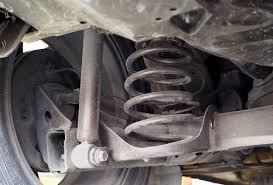WirralCar Repairs
Coil Springs
- Brake Caliper
- Caliper Piston
- Caliper Slider Pin (guide pin)
- Brake Disc
- Brake Pads
- Brake Hydraulic Pipe
- Dust Protection Plate

Common Issues
- Squealing or squeaking noises while braking
- Brakes are vibrating or pulsing when you step on the brake pedal
- Discs show grooves or score marks
- Longer than normal to slow down or stop

What Is a Coil Spring?
Working together to absorb impacts and help keep the tires in contact with the road, coil springs and shocks/struts are key parts of a vehicle’s ride control system. Made of wound metal, coil springs are designed support the vehicle’s weight. They compress and absorb road impacts, allowing the frame and body of the vehicle to experience minimal disturbances when riding over bumps such as railroad tracks or dips such as potholes. Coil springs also help prevent the vehicle from bottoming out when loaded or during adverse driving conditions by working to maintain optimal ride height as determined by the manufacturer.
Types of Coil Springs
CONSTANT RATE: Also known as linear rate springs, these springs feature evenly spaced coils for a uniform rate of compression. The spring compresses an amount proportional to the load being placed on the spring. Popular for heavy-duty and performance applications, when the correct constant rate spring is chosen it helps improve ride quality by reducing pitch and roll.
VARIABLE RATE: Also known as progressive rate springs, these springs have coils that aren’t evenly spaced out. The spring rate changes dynamically as the spring is compressed, allowing it to have different spring rates. The coils that are spread apart provide a comfortable ride under normal conditions and when the vehicle is loaded, those coils become compressed. The tighter wound coils help prevent the vehicle from sagging excessively. Ideal for multipurpose vehicles used as daily drivers as well as hardworking activities like towing or hauling loads, variable rate coil springs can help reduce harshness and pitch and roll, and help avoid bottoming out under various levels of load conditions.